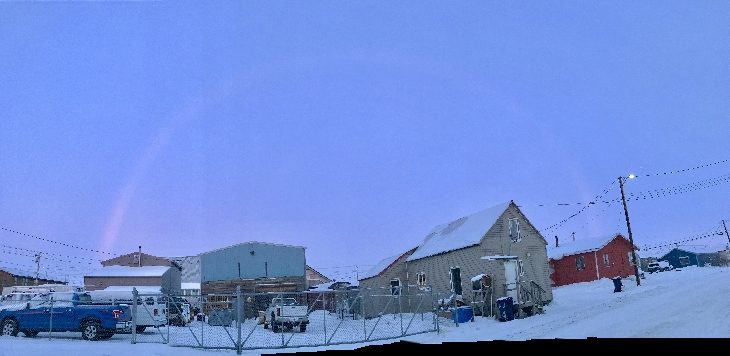
Atmospheric optics expert Les Cowley explains what happened: "This is definitely a rainbow made by water drops, even though it was so cold. Ice spheres, hail or snowflakes cannot make them because a rainbow needs almost perfectly spherical, smooth and transparent water drops. This bow is broad, telling us that the water drops were small. They were also probably quite high up, and might even have been supercooled below the normal freezing point of water."
Supercooled raindrops can form when droplets of water fall through layers of subfreezing air. Droplets containing specks of dust or even microbes readily freeze as ice crystals form around the impurities. But when rain droplets are especially pure, they can remain in a liquid state even when the temperature drops below freezing.
Hence -- the "supercooled rainbow." High latitude sky watchers should be alert for these rare rainbows as strange Arctic weather grips the North in winter 2017.



Reader Comments
to our Newsletter